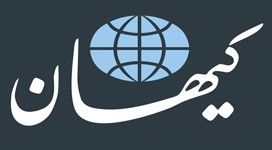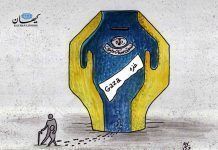December 21, 2017
The U.S. ambassador to the U.N. Nikki Haley has accused Iran of supplying Yemen’s Shia Houthi rebels with missiles to attack Saudi Arabia. During a televised news conference on December 14, Ambassador Haley showed reporters remnants of a ballistic missile that was fired at Riyadh airport in November.
She said: “The missile might as well have had ‘made in Iran’ stickers on it.” Mrs. Haley added that the missile had all the hallmarks of Qiam 1, a short-range ballistic missile designed and manufactured in Iran.
Iran’s Minister of Defence, Brigadier-General Amir Hatami, disputed the U.S. claim, saying: “Our enemies level all sorts of unfounded accusations against Iran. They should provide us with the remnants of the missile in question so it could be examined in Iran.” He added: “The Army’s Defence Technical HQ will submit a formal request to the U.N. in this regard, because we cannot address this issue remotely.”
Major-General Mohammad Baqeri, the Chief of Staff of the Iranian Armed Forces, has described Mrs. Haley’s claim as “ridiculous.” Iran has always denied arming the Houthi rebels which have been fighting the Saudi-backed coalition and Yemeni government since 2015. However, it has emerged that the missiles were manufactured by Shahid Baqeri Industrial Group, which is closely linked with Iran’s missile industry.
This is the first time that Iran has directly challenged a U.S. claim by demanding to examine the remnants of a missile. It is safe to assume that as the commander-in-chief of the armed forces, Ayatollah Ali Khamenei has sanctioned the formal request to the U.N. Could this change in policy be due to the fact that Iran has taken the U.S.’s threats seriously? Is it possible that by offering to review the evidence, Iran hopes to prevent the matter from being referred the U.N. Security Council? Has the regime come to the conclusion that the cost of helping the Houthi rebels outweighs the benefits? Or is this a ploy to buy time and defuse international pressure?
The U.S. House of Representatives passed the “Iranian Leadership Transparency Act” on November 15, 2017 with 43 votes and 16 abstentions. The bill authorizes the United States House Committee on Financial Services [known as the House Banking Committee] to ask the U.S. Department of the Treasury to compile a detailed list of assets held by senior Iranian officials. This is clearly aimed at putting pressure on the Supreme Leader Ali Khamenei.
It is important to remember that In December 2011, an American RQ-170 Sentinel unmanned aerial vehicle (UAV) was captured by Iranian forces near the city of Kashmar in northeastern Iran. Tehran denied the U.S. request for returning the drone.








